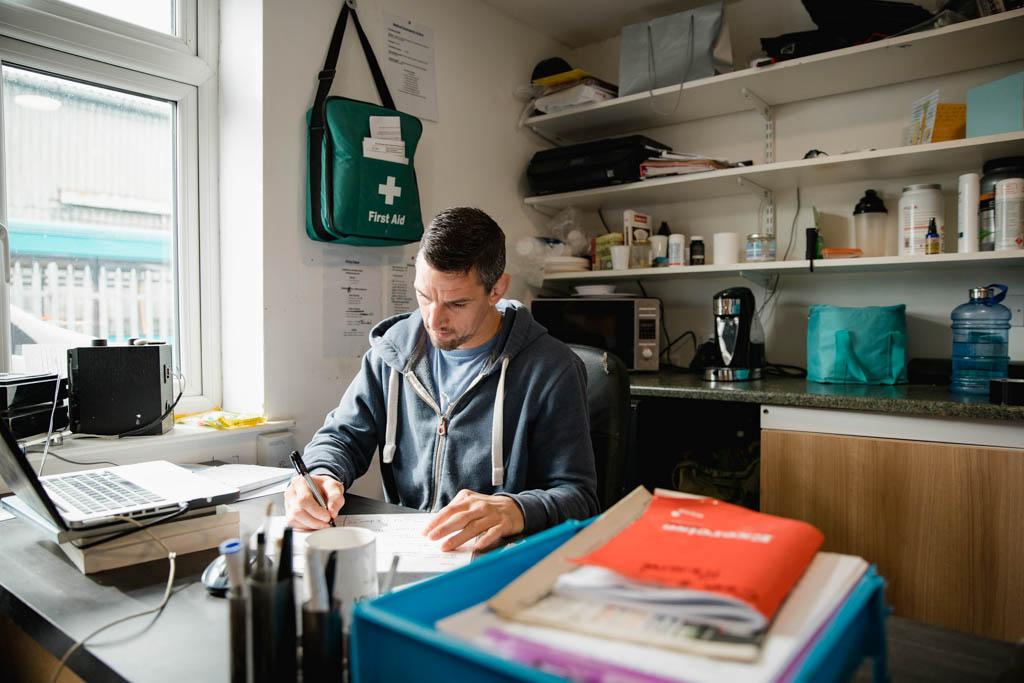In this series, I’ve been writing about how to find, prepare and train coaches for your gym.
The training process for coaches doesn’t end. Despite what your certificate says, your duty as a coach is to find methods that will help your clients reach their goals.
Because every client has different goals, we’ll never run out of methods to explore.
Earlier in this series, I wrote that a coach’s education should be method agnostic. That means coaches should know how to coach before they’re taught what to coach.
A good coach can coach anything.
The Concept, Not the Details
I remember working with my first client. He was a college soccer player and high-school 800-m runner. I had sold my services on my education: a four-year degree, three international certifications (including the NSCA CSCS) and a bunch of seminars. I’d spent five years preparing to train this kid.
And all I could think before our session was: “But what do I actually do?”
Nearly 20 years later, I was asked to coach a kids’ hockey team. I knew nothing about hockey, but I knew a lot about coaching kids. The hockey organization didn’t have much choice: I had free time (thanks to running a great business) and seemed to care about the kids who showed up to play. They really had no one else. So I laced up.
Five years after that, I’m still coaching hockey. While other teams are folding, ours has a waiting list. Our little team of misfits has a full bench. Our kids don’t quit playing hockey. And I still know less about hockey than any other coach in the league, and less than most of the parents. Because I know how to coach.
The Coach’s Progression
Now I coach business owners. Actually, I coach the coaches of business owners. Some are gym owners, some aren’t. I can coach them effectively because I know how to coach. And I co-founded Two-Brain Coaching with Josh Martin to help others learn, too.
Good coaches start by learning principles, not methods. Read Josh’s article on the subject here:
Good coaches keep a beginner’s mindset. Read another of Josh’s articles here:
Then the coach determines the best method to help his or her clients. For many of us, that was CrossFit. But great coaches first learn to deliver constantly varied functional movement at high intensity to one client at a time. Their mentors control the variables of their education. And one variable that adds infinite complexity is training a group. So we teach coaches to deliver simple (yet functional) training 1:1 first. That usually happens in the gym’s on-ramp program.
After that, the coach must become skilled at leadership and group control. He or she must extend coaching from 1:1 to 1:1:8 (meaning 8 people still get a 1:1 experience in a group setting).
Then the coach must learn another variable: how to program for a single client’s individual needs.
Fourth, the coach must learn how to program for a group’s collective needs using data and progress reports. No more “hard for the sake of hard” workouts.
And there’s more after that. But at each stage, coaches must learn more than exercise technique. Improving a coach’s snatch from a 7 to an 8 will yield far less for their clients than improving their leadership from a 4 to a 7.
Mentorship and Development
Like their clients, coaches must have a coach. Lead coaches or mentors must identify a coach’s weakest link and prescribe a path to improving it.
As a numbers guy, I was always drawn to graphs and force curves and research. But a good mentor told me this: “No one cares how much you know until they know how much you care.” So I worked on my smiling and greeting. And as those improved, people listened more carefully to my message and improved more quickly.
Continuing education for coaches, therefore, must include the whole coach’s toolkit. Both the left-brain skills (technique, data analytics and research) and the right-brain skills (empathy, charisma and support) must be strong or the coach will limit his or her potential to help clients.
If you have a head coach at your gym, he or she should look at staff evaluation forms and ask, “What’s the greatest opportunity to improve this coach?”
And coaches should look at their client progressions and ask, “What’s the greatest opportunity to help each client reach his or her goals faster?” Then they should acquire those skills. That could mean nutrition or yoga. It could also mean taking a Dale Carnegie course.
Who pays for continuing ed for coaches? What’s your budget? Who are the best providers?
Download our free Intrapreneurialism 101 Guide here.
Other Articles in This Series
Training Coaches: How to Find New Coaches
Training Coaches: Internships
Training Coaches: Scope of Practice
Training Coaches: Building Careers

